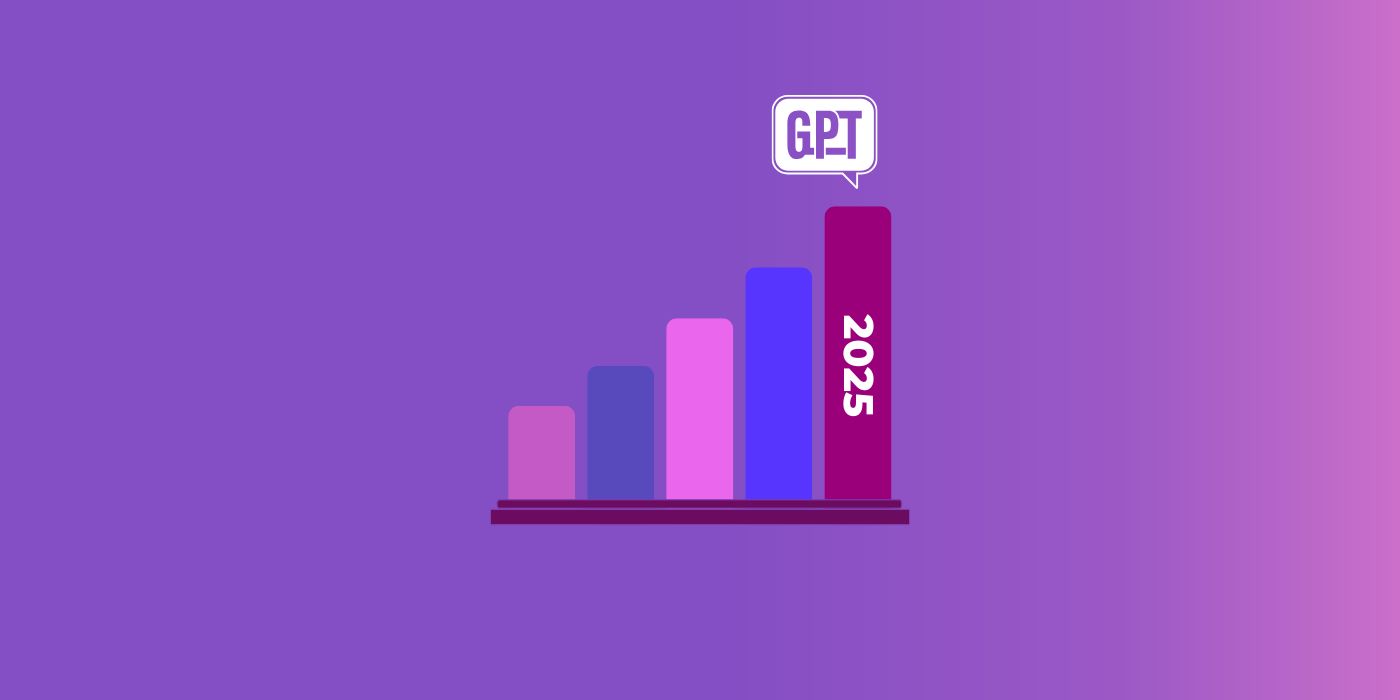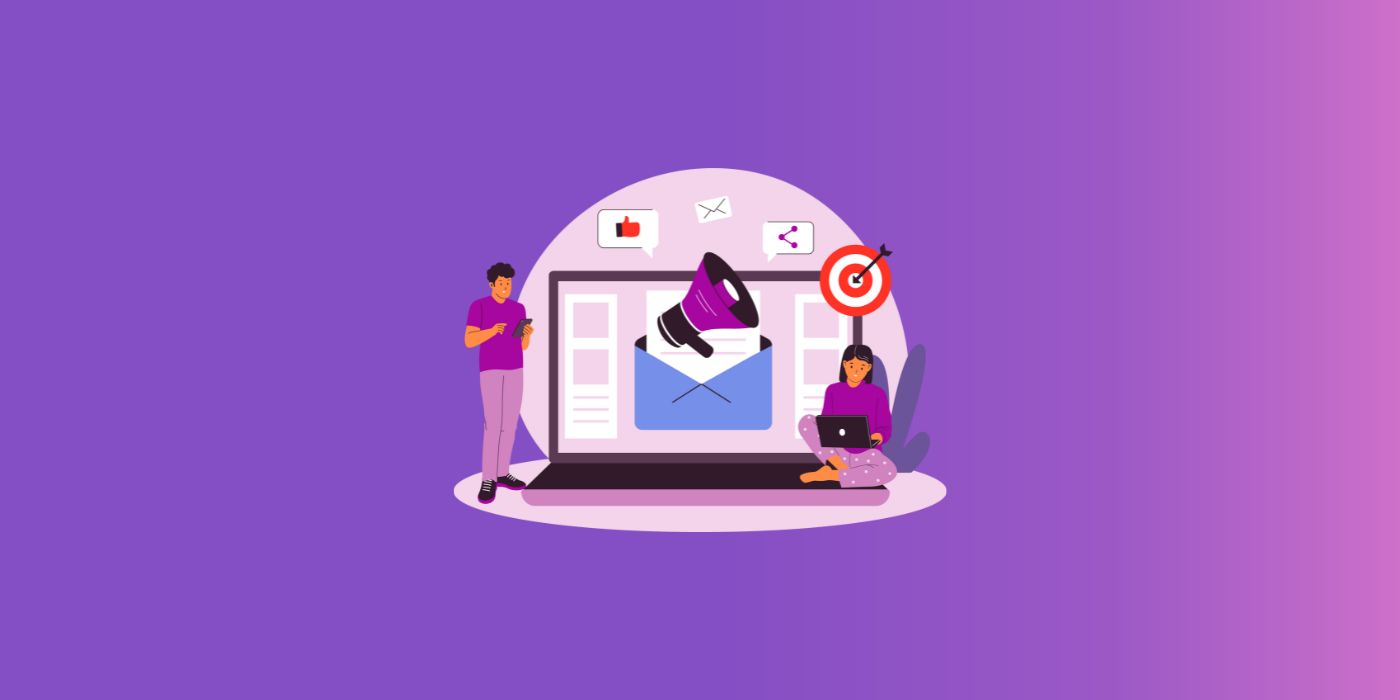How SEO and PPC Work Together: A Practical Guide

As of May 2025, a new player has arrived on the scene: Google’s AI Overviews (AIOs). Because reliable, repeatable tactics to influence AI-generated summaries aren’t yet clear (only with a few emerging exceptions), the search landscape feels uncertain – almost like the Wild West. It’s easy to draw a parallel to Sergio Leone’s Western classic The Good, the Bad, and the Ugly. For now, marketers are best served by optimizing both SEO and PPC campaigns.
In this practical guide, we’ll show how SEO and PPC work together to drive higher ROI and build a stronger marketing strategy. From sharing keyword data to aligning content and landing pages, we’ll break down the benefits of SEO and PPC synergy in a no-nonsense, actionable format. While some tactics may deliver only small gains at first, integrating these channels is an ongoing process. Over time those gains compound.
Shared Data
One of the biggest benefits of SEO and PPC working together is the power of shared data. Each team gathers valuable insights (keywords, user behavior, conversion paths), but the richest insights often live in channel-specific tools, such as Google Ads search term reports or Google Search Console (GSC) query data.
While a unified Google Analytics 4 (GA4) dashboard can highlight overall trends, diving into paid search queries uncovers which ad copy and bids drive conversions, and examining organic performance reveals which pages earn the highest engagement and click-through rates. To fully grasp the strengths and nuances of these two channels, it helps to understand the differences between organic vs. paid search.
Build Integrated Dashboards
- Pull organic rankings, page CTRs, paid impressions and CPCs into a single view. By viewing total search impressions (paid + organic), click-through rates and overall conversions in one place, you can easily spot interplay (for example, a dip in organic clicks offset by increased paid clicks) and adjust your strategy accordingly.
Compare Apples to Apples
- Identify keywords with high paid costs but weak organic positions – an indicator to prioritize SEO, especially when organic competition is relatively low. Conversely, find strong organic performers that may benefit from a PPC test.
React in Real Time
- If you notice a drop in organic conversions for a top term, check PPC auction insights or run a quick SERP search to see if a new competitor ad has appeared. Then adjust your PPC bids, tweak ad messaging or explore alternative high-potential keywords.
Create a Shared “Platform Navigation” Infrastructure
- Document where to find each report (GSC, Google Ads, GA4, Ahrefs/Semrush, Mastersheets, other tools) so both teams can quickly access the same insights.

When SEO and PPC teams freely exchange data and tools, they eliminate blind spots, speed up decision-making, and unlock compounding gains over time.
Brand Strategy
Your brand’s presence on the search results page is vital. Organic listings win free clicks, while PPC claims the premium spots at the top. Research cited in the Search Engine Journal shows that when searchers see both an ad and an organic result for the same company, click-through rates increase significantly. As Rand Fishkin puts it, that dual appearance “biases searchers” toward your brand. Simply put, SEO and PPC synergy means the channels lift each other rather than compete.
Defensive bidding on branded terms
Even if you hold the #1 organic spot, rivals can still bid on your name or close variations – at times even without your auction insights flagging them.
- Protect your turf: A branded PPC ad not only captures users who prefer ads but also forces rivals to pay higher CPCs if they try to bid on your name.
- Extend your real estate: By appearing twice on page one (paid + organic), you reinforce credibility and boost total clicks by up to 50%, according to BrightEdge data from 2015.
- Demonstrates SEO and PPC synergy: When searchers see both an ad and an organic result, it exemplifies the benefits of SEO and PPC working together at the brand level.

Consistent messaging
Coordinate headlines, meta titles, and descriptions across both channels. If your SEO title is “Affordable Enterprise Software”, match it with a PPC headline like “Free Demo – Affordable Enterprise Software.” This unified message reassures users they’ve landed in the right place, boosting conversions and building brand trust.
Branded Search: When to Invest
Running a branded PPC campaign isn’t a one-size-fits-all decision; partnering with a PPC agency can provide expert guidance. Use this case-by-case framework to decide where and when to bid:
1. Competitor activity: Are rivals bidding on your brand terms in key markets?
2. SERP features: Do AI Overviews or other elements push your organic listing below the fold?
3. Organic position: Monitor your average organic rank for branded queries. If you slip below #1 in a market, that’s a strong signal to run a paid campaign.
4. Value vs. effort: Will reallocating branded budget justify the time spent tracking SERP competition? Only conduct regular checks when expected gains exceed monitoring costs.
5. Typos: People often misspell brand names. Look for those variants in Google Search Console or your Google Ads branded campaign (if active) and check your organic rankings on each.
6. Budget share: What percentage of your total search budget is allocated to a brand campaign? Consider reallocating some of your branded keyword budget toward niche or competitor terms if they promise a better return.
– Bid when needed: If you’re slipping below position 1.5, that’s your cue to activate a branded PPC campaign in that market. You may switch from a phrase match to a few variations of exact match after a while. If you rank above 1.5, you can often rely on organic alone – unless other factors apply.
– Pause when possible: When you consistently rank at or above 1.5, scale back or pause the ad and set up a simple monthly check on your organic position and competitor moves. Only relaunch when your rank dips or rivals encroach.
Testing approach:
- Run a 30-60 day experiment: pause branded PPC and compare MoM and YoY traffic, conversions, and CPA. If conversions drop significantly, your branded ads were incremental (not just cannibalizing organic clicks).
- Don’t forget to annotate these tests in GA4 and Google Ads to ensure stakeholders and future account managers understand the full impact.
Optimizing your branded mix:
- Keep ads live where competitors bid on your brand or AIOs obscure your organic results (paid results can and will appear above AIO).
- In markets with minimal competition and strong organic rankings, scale back or pause branded ads and rely on free clicks – while keeping an eye on any changes.
Keyword Strategy & Avoiding Internal Competition
Coordinating keyword coverage ensures SEO and PPC each focus where they shine – without stepping on each other’s toes or wasting budget. Here’s how to map and manage shared keyword plans effectively:
- Keyword buckets: Group your search terms into clear categories (branded, high-intent commercial, informational, long-tail niche) and assign ownership (SEO, PPC, or both). Sharing these plans sparks collaboration and fresh ideas. For example, SEO’s keyword research can feed into PPC’s negative-keyword list, and PPC’s data on high-value, top-of-page bids can reveal lucrative terms for SEO content creation. Of course, there may be deviations, but it can be a great start.
- Hard-to-rank vs. easy-wins: When authority sites dominate a high-value, high-competition keyword, let PPC fill the gap while SEO focuses on more achievable organic targets. As your rankings improve and you form a topical authority, you can rebalance the budget toward SEO for that term.
- Seasonality & Market Trends: Regularly monitor seasonal fluctuations and emerging market trends, as they significantly influence keyword demand and user intent. Adjust your PPC bids proactively to capture timely traffic spikes, and align SEO content calendars with anticipated search interest. Coordinated responses to seasonal changes ensure both teams capitalize effectively on these predictable opportunities.
- Rapid insights with a data navigation sheet: Build a simple spreadsheet or dashboard with one-click links to key reports: search Console exact-query filters (e.g., &query=!fortismedia) and GA4 paid search performance filters (e.g., filterTerm%3Dfortismedia&). This centralized approach helps both teams compare keyword performance instantly without hunting across platforms.
By mapping your shared keyword strategy and reviewing it regularly, you make sure each channel plays to its strengths, maximizes ROI, and fosters SEO and PPC synergy.
Landing Page Collaboration
Fast-Track Landing Page Validation
Use Google Ads to validate new pages before committing to full SEO builds. A quick PPC test – running ads to a draft page – reveals whether your headline, layout, or offer resonates. If it falls flat, you save weeks of content work.
- Ask: Does this page convert in a paid campaign?
- Act: If yes, invest in SEO; if no, iterate quickly.
Content Testing
PPC’s immediate feedback loop also applies to content. Run A/B tests on ad headlines or small landing-page variations to discover which messages drive higher clicks and conversions. Then:
- For SEO: Incorporate winning ad messages into title tags, meta descriptions, and page copy.
- For PPC: Borrow proven organic page elements – like a high-engagement H2 subtitle – for your ad headlines or copy.
This continuous test-and-apply cycle ensures both channels benefit from real performance data and reduces wasted effort on unproven ideas.
Technical & Compliance Basics
While the above covers testing, a few shared technical checks ensure how SEO and PPC work together doesn’t stall:
- Page performance: Fast, mobile-friendly pages improve SEO rankings and Google Ads Quality Score. Simple fixes – image compression, console error cleanup – help both.
- Policy + SEO compliance: Landing pages must meet both Google’s organic quality standards (especially for YMYL topics like medical, finance, or legal) and Google Ads policies. To make sure every page is ready for search and for paid traffic you may conduct a joint review.
- An indexable SEO page that meets organic quality (E-E-A-T, proper citations).
- A policy-compliant PPC variant (tagged noindex or canonical) that removes disallowed content and includes required disclaimers.
Coordination on Site Changes
Whenever the dev team updates URLs, architecture, or launches big features:
- Coordinate changes by keeping colleagues informed of your plans. In most cases, to maximize long-term value, prioritize landing page improvements in this order: SEO needs > CRO/UX tweaks > PPC requirements.
- Pause PPC campaigns if needed during maintenance.
Cautionary tale
As SEO expert Jade Hallam warns on LinkedIn, when a PPC team edited her main ranking pages, “half the SEO content was gone,” and the site’s organic traffic crashed overnight. This illustrates why landing-page changes must be coordinated: never optimize one channel at the expense of the other.
Continuous collaboration
- Keep PPC in the loop: Whenever SEO launches new pages or updates major content, alert the PPC team. These pages can become opportunities for fresh paid-search experiments or targeted keyword tests.
- Use sitemaps wisely: An up-to-date XML sitemap (or page feed) helps PPC’s Dynamic Search Ads and PMax campaigns find and serve new content automatically.
- Disapproval feedback loop: If a page is disapproved in Google Ads (policy flag, 4xx/5xx code, suspected malware), pass the alert to SEO immediately so they can investigate on their part.
Landing pages should be treated as shared assets. They need to be approved for ads, optimized for search, and fully compliant with claims and policies. This approach ensures every visitor has a seamless experience, boosting conversions and protecting rankings.
Reporting
For CMOs and marketing directors, reporting is where you prove the impact of your search investment. While SEO and PPC can be tracked separately, comparing their combined performance is essential when your goal is to maximize value over a specific period. Reporting them in isolation or directly from an advertising platform may lead to double-counted conversions or misattributed credit. That is why integrated reports are crucial for understanding how both channels contribute to overall ROI.
Tracking & Platform Setup
Accurate tracking is the foundation of fair attribution for both PPC and SEO. Misconfigured consent mode, incorrect Google Tag Manager setups, or flawed event tracking can obscure performance more than any on-page or campaign optimization. For example, after improving one client’s tracking setup, misattributed “direct” traffic events dropped by 72 percent, allowing those conversions to be correctly attributed to SEO and PPC.
To ensure fairness, use GA4’s “Paid and organic channels” setting in your attribution settings (rather than leaving it on “Google paid channels” only). This makes both paid and organic touchpoints eligible to receive credit for conversions. Otherwise, you risk undercounting or misattributing how the two channels work together.

Align KPIs Across Channels
At times, it makes sense to agree on shared success metrics that encourage collaboration and drive mutual progress. For example:
- Total leads per month across all channels
- Total revenue generated within X months for a specific landing page or product
When both teams work toward the same objectives, you can even pool budgets to achieve those goals. This shared accountability ensures every dollar spent drives toward a single outcome. Of course, this approach works best when team members understand each channel’s strengths and weaknesses and prioritize the overall success of the organization over individual agendas.
Annotate Major Changes and Your Experiments
Whenever there is a significant update that impacts your website (new cookie banner, core update, duplicate-conversion fix, CSP error correction) or adjustment of long-running campaigns, add annotations in GA4 and Google Ads. For example:
- If you pause branded PPC ads, compare month-over-month and year-over-year metrics (traffic, conversions, CPA) to see if those ads provided incremental value beyond organic.
- If tracking or usability issues arise (e.g., misconfigured tags, a broken form, or a new cookie-consent flow), note them in the annotations so stakeholders understand any data gaps or anomalies.
Documenting these changes prevents confusion, helps connect the dots, and benefits everyone working on the project.
Mutual Experiments & Hypothesis Testing
SEO and PPC teams can validate assumptions by running joint experiments. For example, one common hypothesis is that running Google Ads will boost organic rankings. To test this, launch a short-term ad campaign on specific keywords, track ranking and indexing changes in Search Console, and compare results. While a full case-study would require a separate blog post, our internal tests across three landing pages showed no noticeable lift in organic positions or faster indexing – suggesting there’s no direct causal link between paid spend and SEO rank. Another hypothesis worth testing is whether strong organic rankings allow you to achieve lower CPC.
Always document experiments with clear start and end dates, traffic metrics, tags, links to more extensive files, and ranking (and indexing) data. Experiment sheets may be used by Content, Social, and other teams. This rigor helps all teams learn quickly, adjust strategies, challenge each other, and avoid relying on unproven assumptions.

Conclusion
Bringing SEO and PPC out of their silos unlocks powerful synergies that drive higher ROI, stronger brand presence, and more efficient use of marketing resources. By sharing data, such as keyword insights, landing page performance, and technical metrics, both teams gain a clearer view of what resonates with your audience.
Coordinating branded strategies, keyword coverage, and landing page tests ensures you defend your brand, capture incremental traffic, and avoid internal competition. Rigorous tracking setup, joint experiments, and integrated reporting tie everything together, revealing how each channel contributes to overall success.
In practice, start small: build a shared “Platform Navigation” sheet, run a quick PPC test for a new page or pause branded ads to measure incremental value. Over time, these incremental wins compound – especially in a landscape reshaped by Google’s AI Overviews. Remember, consistent collaboration and experimentation will keep your search strategy agile and give you a genuine edge over the competition. Is there something important we missed? Share your thoughts via our general inquiry form or contact me directly!
Frequently Asked Questions (FAQs)
How do SEO and PPC complement each other?
SEO provides sustainable, long-term visibility, while PPC can quickly fill gaps and test ideas. Together, they deliver comprehensive search visibility and maximize ROI.
Will PPC ads negatively affect my organic rankings?
No. Running PPC ads doesn’t negatively affect organic rankings. Conversely, PPC can help identify successful keywords or messages that improve organic performance.
When should we bid on our own brand keywords?
Bid on branded keywords if competitors actively target your brand, if your organic results are pushed below the fold, or when your organic position slips from the top spot.
Does high organic ranking mean we should pause PPC ads for those keywords?
Not necessarily. Before pausing, test by temporarily stopping PPC to see if overall conversions drop. PPC often captures incremental clicks that organic results alone wouldn’t.
What’s the best way to measure combined SEO and PPC performance?
Use integrated dashboards combining organic and paid metrics. Google Analytics 4 is usually sufficient, especially with multi-touch attribution models enabled to ensure each channel receives appropriate credit.
Should landing pages for PPC and SEO be identical?
If PPC ad policies restrict certain claims or elements, you might need two versions: one optimized for organic indexing and another fully compliant with PPC advertising guidelines. It’s beneficial to run split tests via paid campaigns to determine which landing-page variation performs better.
Read our other articles

Top ChatGPT ranking factors in 2025: Everything brands need to know


Crypto content marketing agency: role, benefits, and how to choose a partner that delivers


LLM SEO strategies 2025: practical tips to optimize for AI-powered search results






